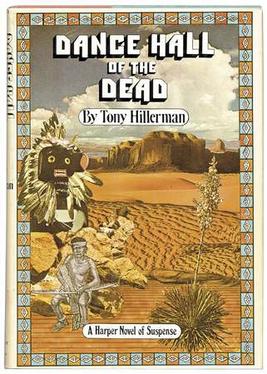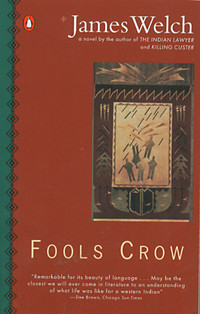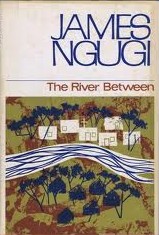
The Indigenous peoples of the Americas comprise numerous different cultures. Each has its own mythologies, many of which share certain themes across cultural boundaries. In North American mythologies, common themes include a close relation to nature and animals as well as belief in a Great Spirit that is conceived of in various ways. As anthropologists note, their great creation myths and sacred oral tradition in whole are comparable to the Christian Bible and scriptures of other major religions.
The Apache are several Southern Athabaskan language–speaking peoples of the Southwest, the Southern Plains and Northern Mexico. They are linguistically related to the Navajo. They migrated from the Athabascan homelands in the north into the Southwest between 1000 and 1500 CE.
A vision quest is a rite of passage in some Native American cultures. Individual Indigenous cultures have their own names for their rites of passage. "Vision quest" is an English-language umbrella term, and may not always be accurate or used by the cultures in question.
Navajo music is music made by the Navajos, mostly hailing from the Four Corners region of the Southwestern United States and the territory of the Navajo Nation. While it traditionally takes the shape of ceremonial chants and echoes themes found in Diné Bahaneʼ, contemporary Navajo music includes a wide range of genres, ranging from country music to rock and rap, performed in both English and Navajo.

Oliver Hazard Perry La Farge II was an American writer and anthropologist. In 1925 he explored early Olmec sites in Mexico, and later studied additional sites in Central America and the American Southwest. In addition to more than 15 scholarly works, mostly about Native Americans, he wrote several novels, including the Pulitzer Prize-winning Laughing Boy (1929). La Farge also wrote and published short stories, in magazines such as The New Yorker and Esquire.

The Navajo or Diné, are a Native American people of the Southwestern United States.

Coyote is a mythological character common to many cultures of the Indigenous peoples of North America, based on the coyote animal. This character is usually male and is generally anthropomorphic, although he may have some coyote-like physical features such as fur, pointed ears, yellow eyes, a tail and blunt claws. The myths and legends which include Coyote vary widely from culture to culture.

Conrad's Fate is a children's fantasy novel by British author Diana Wynne Jones published by Collins in 2005. It was the sixth published of the seven Chrestomanci books.

Laura Adams Armer was an American artist and writer. In 1932, her novel Waterless Mountain won the Newbery Medal. She was also an early photographer in the San Francisco Bay Area.

Dance Hall Of The Dead is a crime novel by American writer Tony Hillerman, the second in the Joe Leaphorn/Jim Chee Navajo Tribal Police series, first published in 1973. It features police Lieutenant Joe Leaphorn. It is set primarily in Ramah Reservation and the Zuni village in New Mexico, both in the American Southwest.

Listening Woman is a crime novel by American writer Tony Hillerman, the third in the Joe Leaphorn/Jim Chee Navajo Tribal Police series, first published in 1978. The novel features Joe Leaphorn.
In Navajo culture, a skin-walker is a type of harmful witch who has the ability to turn into, possess, or disguise themselves as an animal. The term is never used for healers.

Sacred Clowns is a crime novel by American writer Tony Hillerman, the eleventh in the Joe Leaphorn/Jim Chee Navajo Tribal Police series, first published in 1993.

Fools Crow is a 1986 novel written by Native American author James Welch. Set in Montana shortly after the Civil War, this novel tells of White Man's Dog, a young Blackfeet Indian on the verge of manhood, and his band, known as the Lone Eaters. The invasion of white society threatens to change their traditional way of life, and they must choose to fight or assimilate. The story is a portrait of a culture under pressure from colonization. The story culminates with the historic Marias Massacre of 1870, in which the U.S. Cavalry killed a friendly band of Blackfeet, consisting mostly of non-combatants.
Joseph Bruchac is an American writer and storyteller based in New York.
Timothy Patrick Barrus, also known as Tim Barrus, is an American author and social worker who is best known for having published three "memoirs" between 2000 and 2004 under the pseudonym Nasdijj, by which he presented himself as a Navajo. The books were critically acclaimed, and Nasdijj received several literary awards and recognition from major institutions.

Washington Matthews was a surgeon in the United States Army, ethnographer, and linguist known for his studies of Native American peoples, especially the Navajo.
Navajo medicine covers a range of traditional healing practices of the Indigenous American Navajo people. It dates back thousands of years as many Navajo people have relied on traditional medicinal practices as their primary source of healing. However, modern day residents within the Navajo Nation have incorporated contemporary medicine into their society with the establishment of Western hospitals and clinics on the reservation over the last century.

Ceremony is a novel by writer Leslie Marmon Silko, first published by Viking Press in March 1977. The title Ceremony is based on the oral traditions and ceremonial practices of the Navajo and Pueblo people.

The River Between is a 1965 novel by prolific Kenyan author Ngũgĩ wa Thiong'o that was published as part of the influential Heinemann African Writers Series. It tells the story of the separation of two neighbouring villages of Kenya caused by differences in faith set in the decades of roughly the early 20th century. The bitterness between them caused much hatred between the adults of each side. The story tells about the struggle of a young leader, Waiyaki, to unite the two villages of Kameno and Makuyu through sacrifice and pain.













